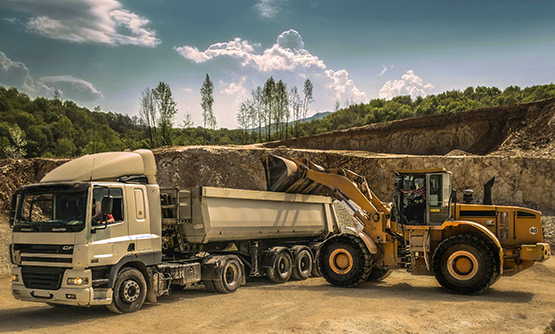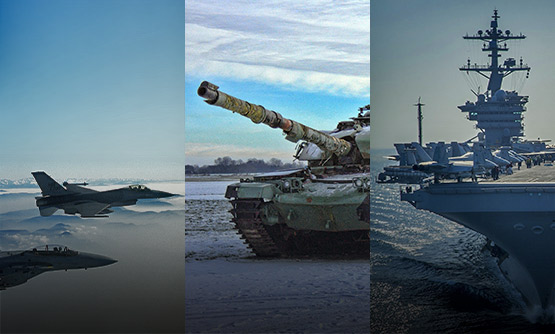Imagine you're thrust with the responsibility of landing a big jet on to the landing zone. All that
you see is dense and thick fog beneath you and there is no way that your human eyes can possibly figure
out where the strip of land is located. This foreseen difficulty during foggy nights is overcome with the
help of radar, which makes use of high-frequency radio waves to 'see' where you're supposed
to land.
Radar makes use of an electromagnetic sensor to detect, locate and track objects by making use of radio
waves. It was developed initially to track enemy aircrafts during World War II. It works by emanating
electromagnetic energy towards the object and the echo received from the target is observed. The objects
or targets can be ships, aircraft, vehicles, astronomical bodies or sometimes even birds and insects.
The Advent of Radar Age in India

Apart from locating the presence as well as the velocity of these objects, radar also helps in determining
the size and shape as well. What makes radar a class apart from other detecting devices is its potential
to detect faraway objects in any kind of weather condition without affecting its precision.
Did you know that Electronics and Radar Development Establishment (LRDE) caters to the development of
radar in India? This laboratory comes under the Defense Research and Development Organization (DRDO). LRDE
has successfully developed several radar systems and has installed them in the Indian Armed
Forces.
The success stories of LRDE in the deployment of radar technology in the armed forces is a clear
indication that its growth has been positive in India. It clears the path of DRDO to make India fiercely
independent in terms of military technology and henceforth decreases the importing of foreign military
equipment.
The initial projects of DRDO only consisted of short-range 2D systems. Currently, it manufactures high
power 3D systems, fire control radars as well as airborne surveillance. Along with these, DRDO also has
many other radar systems that are being developed.
Here are the top three examples of successful radar implementations in India
 Active Electronically
Scanned Array (AESA) radar is the best example of the success story of radar technology in India. Defense
Research and Development Organization (DRDO), the pioneer behind AESA had displayed this masterpiece at
Aero India show that had happened this year in Bangalore. It was installed on Tejas, the fighter aircraft
and about a hundred of these systems have been ordered already by the Indian Air Force.
Active Electronically
Scanned Array (AESA) radar is the best example of the success story of radar technology in India. Defense
Research and Development Organization (DRDO), the pioneer behind AESA had displayed this masterpiece at
Aero India show that had happened this year in Bangalore. It was installed on Tejas, the fighter aircraft
and about a hundred of these systems have been ordered already by the Indian Air Force.
 As per the recent reports in
2019, the latest radar equipment offers better ship survivability due to improved performance. The
state-of-the-art facility of this new technology helps in electronically steering the radar beam. This
negates the effort needed to mechanically rotate the antenna atop the mast of the ship. This improved
technology replaces the rotating antenna in the ship's mast with a fixed antenna, thus reducing
problems like radar cross-section. Further, the new technology is cost effective and also improves the
prolonged sustenance of the ship. By the end of 2019, this technology will be available to everyone.
As per the recent reports in
2019, the latest radar equipment offers better ship survivability due to improved performance. The
state-of-the-art facility of this new technology helps in electronically steering the radar beam. This
negates the effort needed to mechanically rotate the antenna atop the mast of the ship. This improved
technology replaces the rotating antenna in the ship's mast with a fixed antenna, thus reducing
problems like radar cross-section. Further, the new technology is cost effective and also improves the
prolonged sustenance of the ship. By the end of 2019, this technology will be available to everyone.
 LRDE has partnered with
several governments as well as private companies for the production of radars for the Indian Armed Forces.
Some of these radars are INDRA (Indian Doppler Radar), RAJENDRA Radar, Central Acquisition Radar (3D-CAR),
Swathi Weapon Locating Radar (WLR), Ashwini Radar, Arudhra Radar, and PJT-531 Battle Field Surveillance
Radar. These radars have been a boon to the Indian Armed Forces and helped in countering terrorism and
infiltration especially in LOC and other borders. Further, it helped in locating the Pakistani artillery
positions with the capacity of tracking seven targets at the same time.
LRDE has partnered with
several governments as well as private companies for the production of radars for the Indian Armed Forces.
Some of these radars are INDRA (Indian Doppler Radar), RAJENDRA Radar, Central Acquisition Radar (3D-CAR),
Swathi Weapon Locating Radar (WLR), Ashwini Radar, Arudhra Radar, and PJT-531 Battle Field Surveillance
Radar. These radars have been a boon to the Indian Armed Forces and helped in countering terrorism and
infiltration especially in LOC and other borders. Further, it helped in locating the Pakistani artillery
positions with the capacity of tracking seven targets at the same time.
What AXISCADES does
AXISCADES provides comprehensive design, development and integration services for radar electronics
sub-systems, from initial prototyping through low volume production with the agility to adapt to changing
customer requirements throughout the lifecycle. We are a leader in the design and development of rugged,
high-performance radar electronics and sub-systems for Data Acquisition and Signal Processing system like
RPUs, Transmit-Receive (TRMs), Receivers, Synthesizers, and Data Recorders.
Our radar sub-systems utilize a broad range of technologies including mixed signals, high-speed digital,
radio frequency (RF) and specialized electro-optics (EO). Our radar subsystems designs are backed by
in-house research and development operations that help ensure that the solutions offered, incorporate and
remain at the leading edge of signal processing technology.













